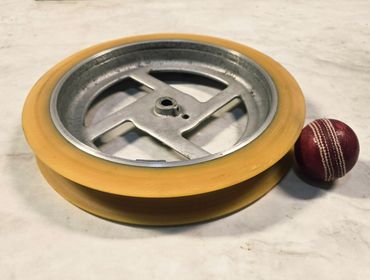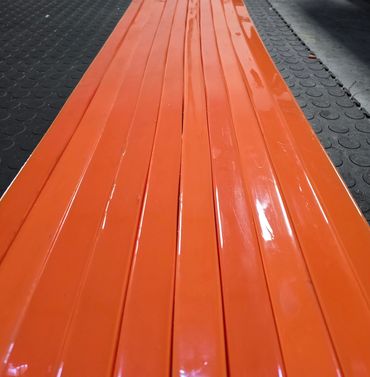
est. 2005
Innovative Polyurethane Engineering Services

est. 2005
Innovative Polyurethane Engineering Services

Polyurethane: A versatile class of polymers formed by linking organic units through carbamate (urethane) bonds.
Cape Urethanes specializes in this versatile class of polymers, supplying a wide range of polyurethane solutions and components for Forklift, Logistics, Engineering, Mining and Sports Industries with exceptional quality and durability. This includes i.e. Forklift/Truck Wheels, Mining Components, Engineering R&D etc.








.jpg/:/cr=t:13.24%25,l:13.24%25,w:73.53%25,h:73.53%25/rs=w:370,cg:true,m)
.jpg/:/cr=t:11.54%25,l:11.54%25,w:76.92%25,h:76.92%25/rs=w:370,cg:true,m)









85x75x60 Shaft Bore 12 Toyota BT OSE/LPE Machine
(Bearings, Shaft and Dust Covers included)
POA
130x50x95 Shaft Bore 20 Toyota BT LPE Machine
(Bearings, Shaft and Dust Covers included)
POA
230x80x177, Shaft Bore 44, 5 studs (Toyota Electric)
POA
343x140x275, Shaft Bore 90, 7 studs (Toyota Reach truck)
POA
Subject to availability

The classification of hardness for polyurethane relies on the prepolymer's molecular structure and can be manufactured from 20 SHORE A to 85 SHORE D
Polyurethane has a high load capacity in both tension and compression. Polyurethane may undergo a change in shape under a heavy load, but will return to its original shape once the load is removed with little compression set in the material when designed properly for a given application.
Polyurethanes perform very well when used in high flex fatigue applications. Flexural properties can be isolated allowing for very good elongation and recovery properties.
For applications where severe wear prove challenging, polyurethanes are an ideal solution even at low temperatures.
Polyurethanes possess high tear resistance along with high tensile properties.
Polyurethane's material properties will remain stable (with minimal swelling) in water, oil and grease. Polyether compounds have the potential to last many years in subsea applications.
Polyurethanes exhibit good electrical insulating properties.
Resilience is generally a function of hardness. For shock-absorbing elastomer applications, low rebound compounds are usually used (i.e. resilience range of 10-40%). For high frequency vibrations or where quick recovery is required, compounds in the 40-65% resilience are used. In general, toughness is enhanced by high resilience.
Polyurethane bonds to a wide range of materials during the manufacturing process. These materials include other plastics, metals and wood. This property makes polyurethane an ideal material for wheels, rollers and inserts.
Polyurethane is very resistant to extreme temperature, meaning harsh environmental conditions and many chemicals rarely cause material degradation.
Most polyether-based polyurethanes do not support fungal, mold and mildew growth and are therefore highly suitable for tropical environments. Special additives can also be added to reduce this in polyester materials as well.
Varying color pigments can be added to polyurethane in the manufacturing process. Ultraviolet shielding can be incorporated into the pigment to provide better color stability in outdoor applications.
Polyurethane is often used to manufacture one-off parts, prototypes or high volume, repeat production runs. Size ranges vary from a couple grams to 2000lb parts.
Compared to conventional thermoplastic materials polyurethane has a relatively short lead time with significantly more economical tooling costs.
Unit 10, 13 Patrys Crescent, Okavango Park, Cape Town, South Africa
Open today | 07:30 – 15:30 |
Mon | 07:30 – 16:00 | |
Tue | 07:30 – 16:00 | |
Wed | 07:30 – 16:00 | |
Thu | 07:30 – 16:00 | |
Fri | 07:30 – 15:30 | |
Sat | Closed | |
Sun | Closed |
We use cookies to analyze website traffic and optimize your website experience. By accepting our use of cookies, your data will be aggregated with all other user data.